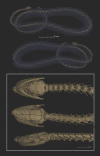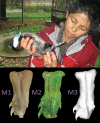Bridging the Research Gap between Live Collections in Zoos and Preserved Collections in Natural History Museums
- PMID: 35592056
- PMCID: PMC9113241
- DOI: 10.1093/biosci/biac022
Bridging the Research Gap between Live Collections in Zoos and Preserved Collections in Natural History Museums
Abstract
Zoos and natural history museums are both collections-based institutions with important missions in biodiversity research and education. Animals in zoos are a repository and living record of the world's biodiversity, whereas natural history museums are a permanent historical record of snapshots of biodiversity in time. Surprisingly, despite significant overlap in institutional missions, formal partnerships between these institution types are infrequent. Life history information, pedigrees, and medical records maintained at zoos should be seen as complementary to historical records of morphology, genetics, and distribution kept at museums. Through examining both institution types, we synthesize the benefits and challenges of cross-institutional exchanges and propose actions to increase the dialog between zoos and museums. With a growing recognition of the importance of collections to the advancement of scientific research and discovery, a transformational impact could be made with long-term investments in connecting the institutions that are caretakers of living and preserved animals.
Keywords: aquariums; biodiversity; biological collections; natural history collections; zoos.
© The Author(s) 2022. Published by Oxford University Press on behalf of the American Institute of Biological Sciences.
Figures





References
-
- [AZA] Association of Zoos and Aquariums . 2021a. The Accreditation Standards and Related Policies. Association of Zoos and Aquariums.
-
- [AZA] Association of Zoos and Aquariums . 2021b. Zoo and Aquarium Statistics. Association of Zoos and Aquariums.www.aza.org/zoo-and-aquarium-statistics.
-
- Card DC, Shapiro B, Giribet G, Moritz C, Edwards SV.. 2021. Museum genomics. Annual Review of Genetics 55: 633–659. - PubMed
-
- Cohn JP. 2006. New at the zoo: ZIMS. BioScience 56: 564–566.
LinkOut - more resources
Full Text Sources
Miscellaneous

